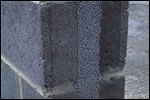Huge demand for new deep retrofit grants
Some one-stop-shops will not take on projects with new build extensions.
Some one-stop-shops will not take on projects with new build extensions.
The deep retrofit of this 1930s dwelling on the Hampshire coast provides a pitch-perfect example of how to transform old dwellings while preserving their original structure and minimising embodied carbon, utterly transforming the living space without the need for an extension, and creating a cosy home that uses two-thirds less energy than before.
The government is building cross-party retrofit commitments to ensure a long-term and continuous programme of retrofit work, Passive House Plus has learned.
RIBA has published a new in-depth guide to the Enerphit Standard, the Passive House Institute’s benchmark for retrofit projects.
For a while now, schemes that aim to encourage the mass uptake of home energy upgrades — essential for cutting carbon emissions from our building stock — have tended to fall into two camps: those that focus on shallow measures like cavity wall insulation and new boilers, and deep retrofit like the Passive House Institute’s Enerphit standard. A new Irish retrofit scheme aims to point the way forward by bridging the gap between these two extremes.
Leading low energy and passive house builder Pat Doran Construction Ltd recently picked up two leading construction industry awards for its Enerphit-standard upgrade to an early 20th century house in Rathgar, Co Dublin.
There was a time when governments thought that simply offering grants for cavity wall insulation and heating system upgrades would be enough to stimulate mass upgrade of our building stock. But ‘shallow’ measures such as these may not be sufficient to drastically cut carbon emissions and make a real difference to occupant comfort and health, and convincing homeowners to upgrade their homes to a much higher standard will require a clever mix of psychology and smart financing
The Energiesprong initiative is planning to deliver drastic energy upgrades to over 100,000 homes in the Netherlands using a wildly ambitious approach to retrofitting the country’s building stock. Now the organisation has moved to the UK, where it is hoping to undertake its first projects next year.
This pioneering upgrade project, completed in 2009, turned a Victorian redbrick in Birmingham into one of the UK’s greenest homes. Along with a much wider ecological agenda, the house employed fabric first principles of insulation and airtightness, and met passive house design targets at a time when the standard was still in its infancy in the UK.
The general consensus is that it’s not appropriate to upgrade historic buildings to avant garde energy efficiency levels, creating a sense that conservation of the natural and built environments may be mutually exclusive concerns. Not so, argue Arboreal Architecture’s Harry Paticas and passive house engineer Alan Clarke in an updated version of a paper presented at the 2014 International Passive House Conference, about a highly experimental upgrade to a London townhouse that may point to a sustainable solution.
Tina Holt had experience advising homeowners on energy efficiency, so when she wanted a low energy home, buying a run-down 1950s dwelling and aiming to turn it passive was an obvious step. She tells her own story below.
Most energy upgrades to historic homes in architectural conservation zones take a fairly gentle approach to insulation and airtightness — this one did the exact opposite.
Some buildings are beyond saving, such as a south Dublin cottage which had to be knocked to deliver the first phase of a sleek new low energy home.
This upgrade and extension to a rural home in County Cork cut its energy use by almost 90%, bringing it to the cusp of an A1 Building Energy Rating.
Tipperary Energy Agency has announced the launch of its Superhomes pilot project, which is seeking 20 suitable homes anywhere in Ireland to undertake an energy retrofit. The works will be financed by the Better Energy Scheme and run in conjunction with AIB and Electric Ireland.
The vast majority of energy upgrade projects aim for low hanging fruit measures, and risk locking buildings and their occupants into needlessly high energy usage, environmental impact and discomfort. This recent home upgrade on the outskirts of Cork City shows what truly deep retrofit looks like.
If you’ve ever wondered what it’s like to live in a passive house, a B&B in Devon could be just the ticket. The winner of the private housing award at the 2013 UK Passivhaus Awards, this upgraded 1970s home proves that even existing buildings can be made passive.
Turning an old Victorian home into a passive house is a painstaking job that would frighten many building professionals. But the team behind this innovative retrofit didn't just end up with a certified passive house, they got one of the lowest energy dwellings in the UK.
A recently completed pilot project by Cork Institute of Technology may be a model for bringing untenably inefficient and uncomfortable office buildings up to near zero energy performance levels.
Four industry leaders will launch their drive for better retrofit standards across the UK at Ecobuild next week with a pledge to assure the post-retrofit performance of traditional solid wall buildings.
Progress on retrofitting Europe's building stock is sluggish, but there is a way out of the mire.
A house in south Dublin recently became the first Irish building to become EnerPHit certified. Architect Joseph Little describes the challenges of meeting the Passive House Institute’s standard for upgrading existing buildings.
How do you make an old building liveable on Ireland’s wind ravaged Atlantic coast? The answer lies in the envelope, with airtightness, super insulation and the eradication of cold bridges
During his tenure as energy minister Eamon Ryan instigated plans to energy upgrade Ireland’s draughty, damp housing stock. Ryan and his wife, writer Victoria White, show Construct Ireland how their own home has been given the green treatment, and architect Mike Haslam of Solearth describes the project.

